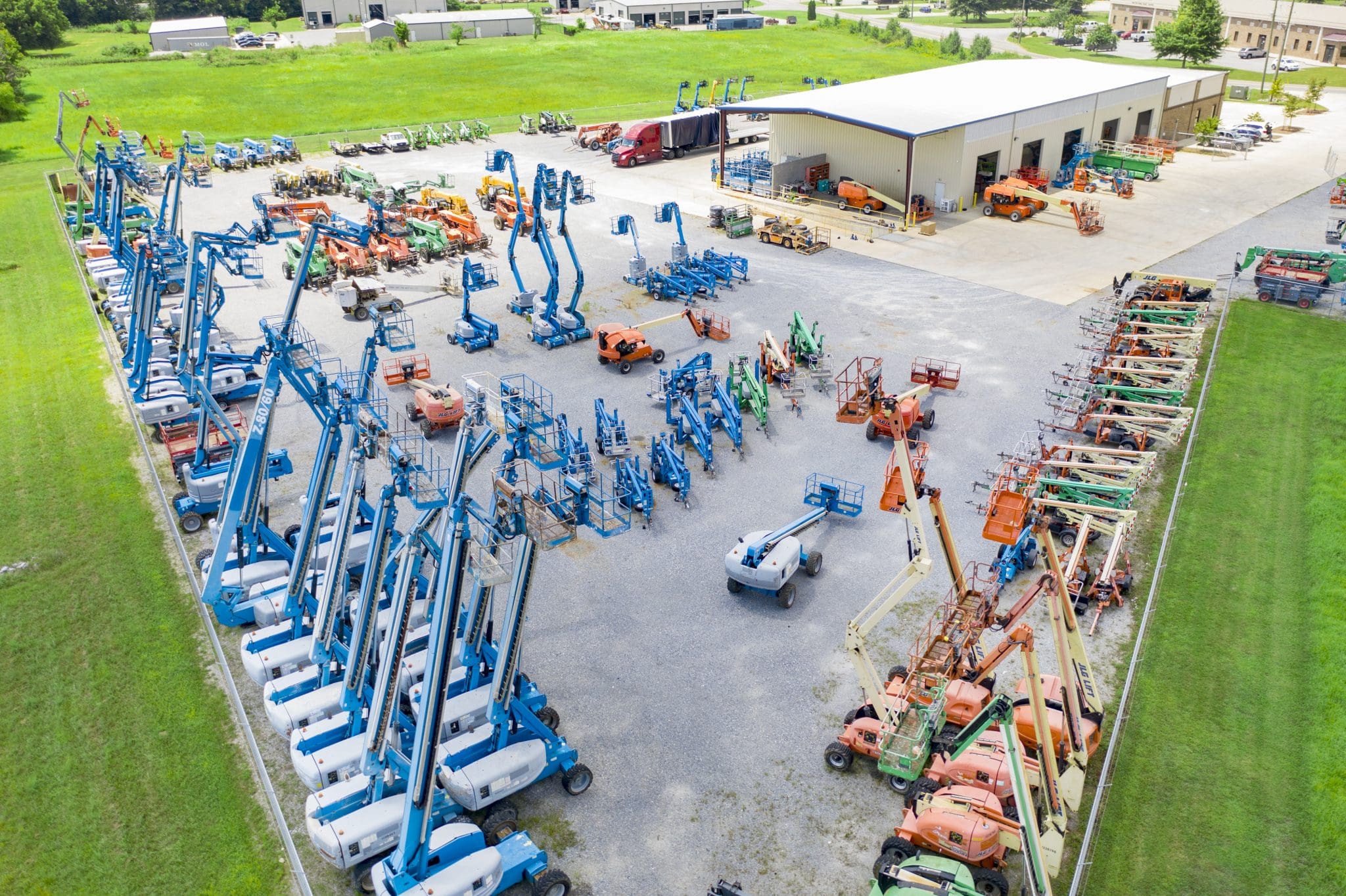
In the construction world, there are many different types of heavy machinery that are used on a regular basis. Among these machines is the boom lift, which has quickly become one of the most popular pieces of equipment for construction workers and contractors.
In this blog post, we will answer all of your questions about boom lifts! We will discuss what boom lifts are, how boom lifts work, when to use a boom lift, and the benefits of using a boom lift!
A boom lift is a type of aerial platform or elevated work platform (EWP) that consists of a hydraulic arm with a platform at the end. The arm can extend outwards from the body of the machine and reach heights of up to 200 feet1. Boom lifts are commonly used in construction, industrial, and event settings.
Boom lifts come in two different types: electric and combustion engine-powered. Electric boom lifts run on electricity, while combustion engine-powered boom lifts run on diesel fuel, LP Gas and/or Propane.
A boom lift is a piece of equipment that uses a boom to lift workers and materials to high places. The boom is attached to the mast, which rests on the ground. The boom can be raised and lowered to reach different heights.
The boom lift works by using hydraulic cylinders to raise and lower the boom. These cylinders are powered by either electric or diesel engines. When the boom is raised, the boom lift becomes taller and can reach higher places. When the boom is lowered, the boom lift becomes shorter and can fit through narrower spaces.
Boom lifts have become an essential piece of equipment in the construction world. There are many benefits to using a boom lift, some of these benefits include:
There are many different situations where a boom lift would be useful, some of these situations include:
Always consult with your supervisor before using a boom lift to make sure that it is the right tool for the job.
In conclusion, boom lifts are a versatile and safe tool that can be used for many different tasks. If you need to work on something high up or a lift to work inside or outside, a boom lift is a perfect solution.
For more information about boom lifts, feel free to reach out to us via our contact form!
Telescopic and articulating boom lifts are both used for lifting workers and equipment to elevated work areas, but each has unique capabilities.
Telescopic boom lifts have an extending arm that allows for increased or decreased reach as needed. Heights of over 180 feet are reachable using this type of lift. This capability and direct range of motion make telescopic boom lifts effective for maintenance, repair, and construction work around and inside of tall structures.
Articulating boom lift arms attach to a rotating base, providing a greater degree of motion. The boom lift arm moves horizontally and vertically, allowing for increased flexibility in platform placement. In instances where areas are more challenging to reach or where there are barriers to maneuver, articulating lifts are ideal.
Choosing a boom lift with a particular power source impacts fuel costs and operability. Electric-powered models don’t produce emissions in the same way diesel options do, so consider an electric version for projects that require minimal environmental impact.
Electric models are also quieter than their diesel counterparts, so opt for an electric model for indoor projects and nighttime outdoor use. Diesel-powered lifts can run for longer periods and are more suitable for outdoor conditions2.
Finding the “right” lift for the job is all about determining project needs.
Boom lifts have various safety features, reducing the risk of worksite injuries. Secure guardrails and attachment points for harnesses prevent workers from falling off the platform. Toe boards provide a barrier that prevents tools or supplies from rolling off the platform and onto workers.
Boom lifts may include integrated sensors to detect potential hazards. For example, tilt sensors tell the operator when the lift is at risk of tipping over. Load sensors provide feedback when cargo is above the maximum weight limit. Emergency stop buttons quickly bring the machinery to a halt, preventing an imminent accident.
Being able to lower the boom lift after a failure is vital, which is why boom lifts have battery backups. The backup ensures safe operation when the primary power source fails.
When choosing a boom lift, operators need to think long-term about how they will use the equipment now and their future needs.
If operators perform the same work consistently, such as power line maintenance, they should note the height requirement and weight capacity to find a boom lift that matches their needs.
Projects with varying height and weight requirements demand more flexibility. In this case, an operator should choose a boom lift with the highest height and weight capacity. By doing so, operators will be prepared for current and future work.
Performing preventative maintenance on a boom lift goes a long way in extending its life, reducing repair costs, and protecting the manufacturer’s warranties.
Mechanics should inspect boom lifts every 150 hours of use or every three months, and operators should perform daily inspections of the filter, charge, fuel and hydraulic oil levels, and water levels (electric models).
These steps make it possible to catch minor issues before they become major concerns.
Operators must receive OSHA-compliant boom lift certification. Certified operators are better prepared to use the equipment safely and understand what to do in case of emergencies. They are also better prepared to identify potential hazards.
Training includes coursework, as well as hands-on demonstrations to show proficiency.
Workplace environments can vary greatly depending on the types of projects. An operator may be using equipment outdoors or in smaller areas indoors, for example. Employers may require additional training for any unique workplace rules and hazards3.